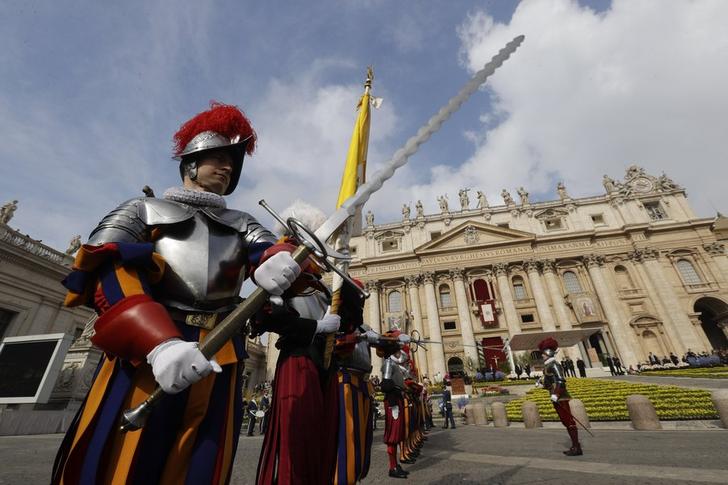The Swiss Guard (or Papal Guard) was established in 1506 under Pope Julius II and is the oldest standing army in the world (513 years). With just 135 men, it’s also the smallest standing army in the world.
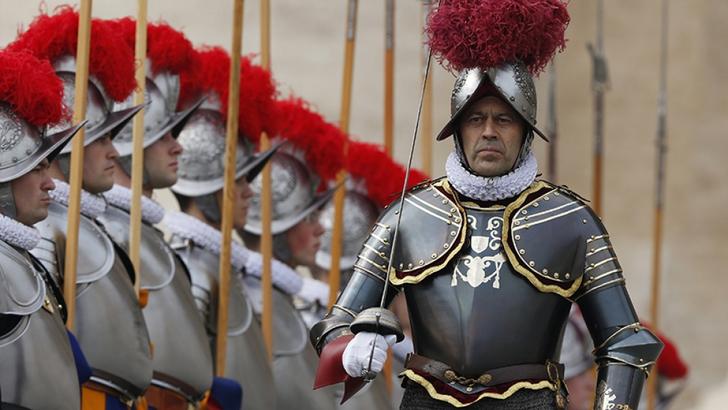
Before applying for the Pontifical Swiss guards, each recruit must be a single male of Swiss citizenship standing at least 174 cm (5’ 8 “) tall, between ages 19 and 30, and also holding a high school degree or professional diploma. Each recruit must also be a faithful Roman Catholic as endorsed by his hometown’s Parish Priest.
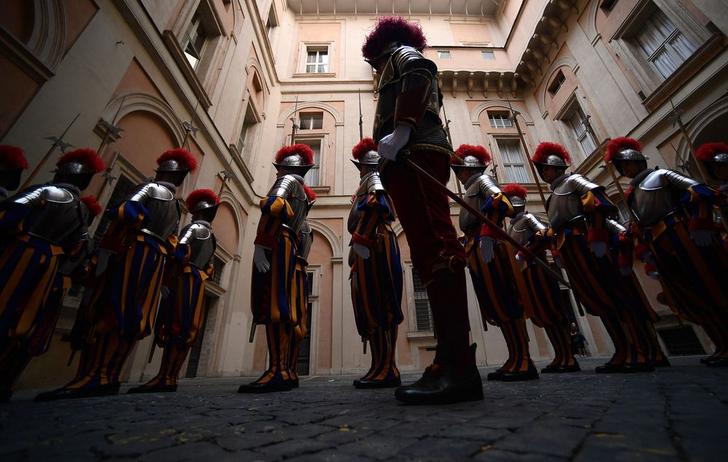
Each recruit must have completed basic military training in Switzerland in order to continue to the first five weeks of training with the guards in Rome. After this training period, the Swiss soldiers are known as Halberdiers, owing to their halberds, the primary weapons the Swiss mercenaries used in the 14th and 15th century.
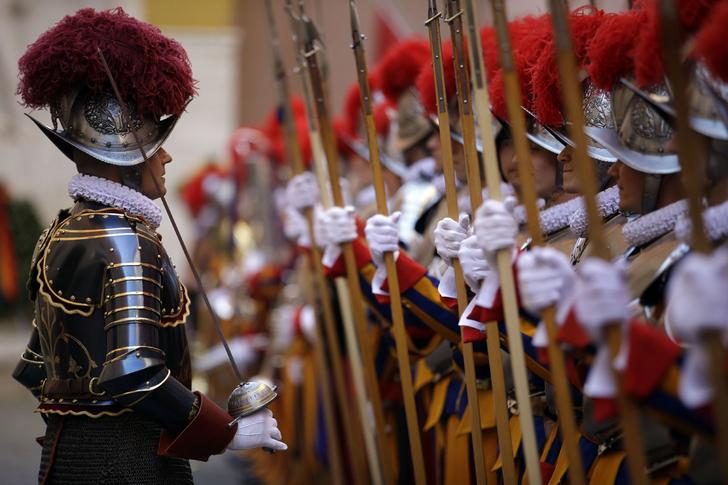
A Swiss guard’s shortest contract is 25 months. Once a Halberdier starts his contract, he will attend Italian lessons if he does not already speak the language. By the end of the first year of service, the Halberdier is usually ready for guard duty at the main gates of Vatican City, dealing with everyday tourists (and often VIP guests, too!).

The colorful uniforms in the Medici colors of red, yellow and blue, known as Gala Uniforms, were put to use only after 1910. (It is a myth that the Swiss guard uniforms were designed by Michelangelo.) Each Gala Uniform is sown by the tailors inside the Vatican barracks – tailor-made to fit each guard. This process takes at least 30 hours per uniform! After completing their service, all of the guards’ personal uniforms are destroyed, never to be used again.
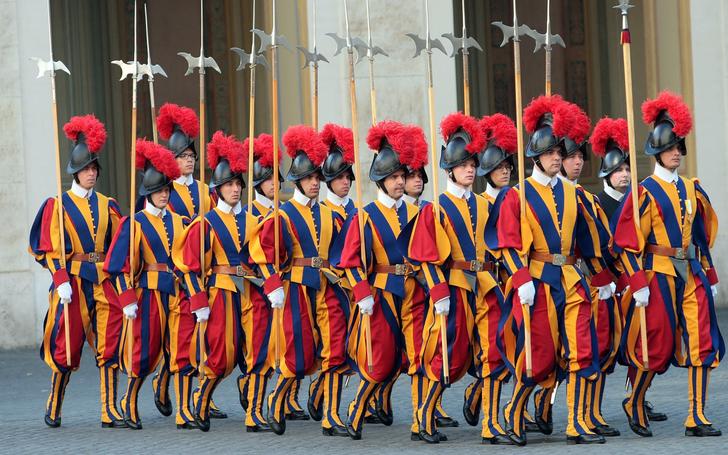
Some of the armor that are used today are originals from the 15th century. New armor is made by specialized blacksmiths to replace ones that can no longer be renewed. The morion helmet, worn with dyed ostrich feathers, holds the family sigil of Pope Julius II, the oak tree.

As far as weapons go, the Swiss Guard uses Halberds for ceremonial duty and firearms when they act as bodyguards during events and VIP visits. They still have some of their classic rifles in the armory, but actually use modern weaponry like the SIG Sauer 9 mm and H&K submachine guns while on duty.

In 1527, an even that came to be known as “Stand of the Swiss Guard”, the 189 Swiss Guard in the Vatican gave their lives defending the city against an invading force of 20.000+ soldiers. They made their last stand in the Teutonic Cemetery within the Vatican. The Swiss fought bitterly, but were immensely outnumbered and only 42 survived the battle. This group then held off the attackers long enough to give the Pope and his entourage enough time to escape.
